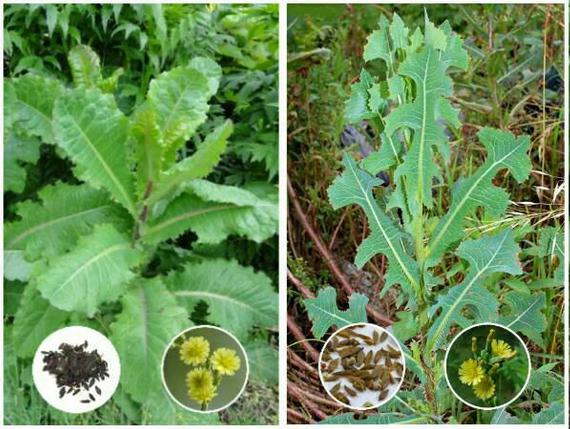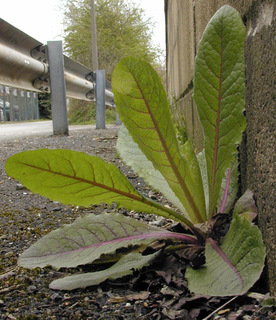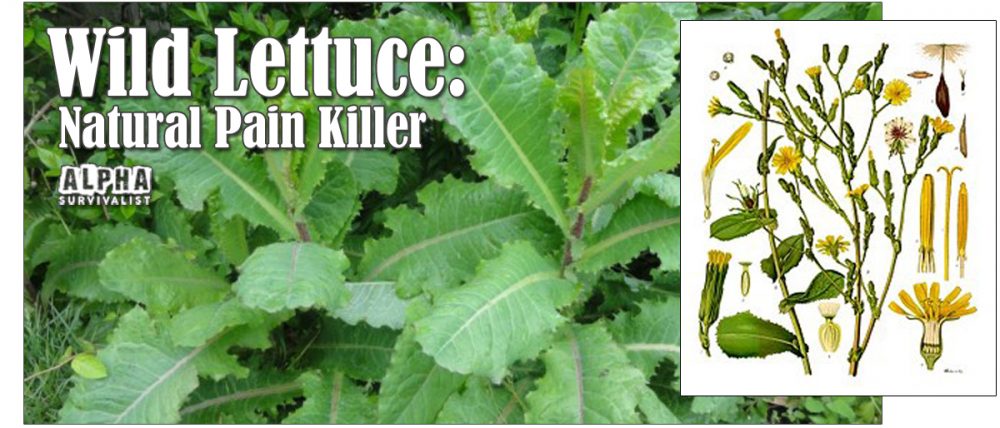In days gone by, long before billion dollar pharmaceutical companies were robbing us blind on behalf of their shareholders, our ancestors used to forage in the wilderness seeking out specific plants that could provide natural remedies and treatments as good as, and in most cases safer, than anything you can pick up from your local drugstore today.
Unfortunately, the medicinal knowledge that had been accrued over hundreds of years, that was passed on from one generation to the next, has been largely forgotten, especially by the vast majority of today’s younger generation.
Thankfully, the thirst for knowledge of all things natural, particularly medicine, has been gaining momentum, predominantly by those with an harbored interest in survival and emergency preparedness for whom the wonders of Mother Nature’s medicine cabinet are becoming increasingly important.
There are literally thousands of plants that have a modicum of medicinal value, but those that provide pain relief have always been regarded very highly. One such plant, that is often at the top of many peoples’ list as it offers excellent pain relieving properties is Lactuca Virosa, also known as the wild lettuce or opium lettuce.
>>Check out Wild Lettuce Extract Here<<
Medical Disclaimer
Before we go any further we would like to make it perfectly clear that we at Alpha Survivalist are not healthcare professionals and that the following content is solely for informational purposes. The information below is not intended as a substitute for professional medical advice or as a substitute treatment given by a trained medical professional.
Accordingly, before you take any action based upon the information provided below, we would advise you to consult a healthcare professional. Any action taken, or reliance on, the information provided below will be solely at your own risk.
What is Wild Lettuce?

Physical Attributes
Wild lettuce is a herb that grows mainly in sunny locations, on riverbanks or along roadsides. Anyone searching for it can identify it to be a plant that features a green stem that is usually spotted purple, and bright green leaves. The plant can grow to an impressive height of 1.8 meters.
As mentioned, the most significant quality of wild lettuce is its remarkable pain relieving properties, which comes from lactucarium – a milk-like, white substance that the plant secretes. Once the substance dries up, it becomes similar to opium, which actually led to the plant receiving the nickname, “opium lettuce.”
Pain Relief with No Side Effects
Research studies associated with the plant and its lactucarium date back to the early 1800s, when doctors first began experimenting with it and using it as a pain relief agent. Since then, the plant has been used to produce countless products, such as oils, pills and tinctures, some of which are even marketed to help with sleeping problems, anxiety or breathing issues.
Aside from pain relief, many also believe that the plant can aid in curing or treating a variety of other problems. These may include poor circulation, restlessness, arthritis, menstrual cramps or even certain types of cancer.
One of the greatest things to remember about wild lettuce is that it’s a natural alternative to opium which has similar effects, but with far fewer dangers or bad side effects attached to its use. As a result, unlike opium, it remains legal and safe to use, and its popularity continues to grow to this day.
How to Properly Identify Wild Lettuce and Tell It Apart from Other Plants
In order to use wild lettuce, you must first be capable of spotting it. While its unique leaves and tall stem might give you a hint of what it looks like, it’s important to know more in detail about the plant’s physical properties and appearance, before being able to tell it apart from various other herbs and plants.
The General Appearance of the Plant
Wild lettuce plants are erect biennials which are characteristically described by their light green-colored leaves, solitary, tall stem and the distinctive row of sharp prickles found on their leaves. The plant’s large taproot produces a milky substance which exudes out once the taproot is cut.
The wild lettuce plant is by no means 100% unique. In fact, many experts consider that it’s quite difficult to identify, since it resembles other plants, such as milk thistle and dandelion. Nevertheless, the herb does have a few important and quite telling properties that you have to know about:
- First of all, young wild lettuce plants have much shorter leaves than fully grown specimens. The leaves grow in clusters at first, then in time, they start growing longer as the plant develops a thicker stem.
- The stem can reach heights that range between two and seven feet. They are filled with the milky juice known as lactucarium, and are often branched extensively in their upper areas, where one can find the plant’s small, daisy-like flowers.
- The herb features alternate leaves that are present one per each node, and can grow to lengths of up to 12 inches. The basal leaves are larger than the stem leaves, but the coarse leaves can grow to irregular sizes when compared to each other. The stem leaves are typically shorter, lance-shaped leaves that don’t have lobes.
- The small flower heads make up terminal clusters, as the unopened flowers resemble a tightly knitted, green droplet, when shown together. When open, the flowers are just ½ of an inch wide, and consist of a number of 5 to 12 yellow flowers which gradually fade to a light bluish color as they dry up.
- Wild lettuce plants also develop a curious type of fruit that are about 1/10 of an inch long, and feature an oblong shape.
>>Check out Wild Lettuce Extract Here<<
Comparing Wild Lettuce with Other Herbs

Dandelion is the flower that most people mistake for wild lettuce, especially as it grows older. As a dandelion grows taller, its tinier flowers can easily be mistaken with wild lettuce flowers, as can the tall stem and coarse leaves. However, unlike dandelion, the wild lettuce has smaller, multiple flowers (as opposed to just one dandelion), a much taller stem and a thicker stalk.
Wild lettuce can also be confused with prickly lettuce plants. However, unlike the latter, the wild lettuce grows taller and has a thicker stem. Most importantly, the leaves are markedly different. Wild lettuce leaves can spread out much farther, and they aren’t as divided as the leaves of a prickly lettuce plant.
The Qualities and Uses of Wild Lettuce: What Can Wild Lettuce Really Help with?
Wild lettuce is considered to be one of the most popular and efficient herbs when it comes to pain-relieving benefits and fighting general anxiety. This natural remedy has been known for more than 200 years, and continues to be seen as a safe and effective herb that has the potential of relieving pain with little to no side effects.
Important Benefits to Look at
The main application of wild lettuce is pain relief. Now, depending on the source of the pain, the herb can be more or less effective. However, wild lettuce and the substance it secretes – known as lactucarium – is known to help relieve pain caused by arthritis, painful menstrual cramps, bruises, cuts, broken bones, migraines and even hangovers.
Aside from these documented qualities for wild lettuce, the following are also counted among the most significant potential uses and benefits linked to the herb:
- Wild opium lettuce is known to calm the nerves and have an excellent effect in the fight against anxiety and insomnia. Its sedative properties will calm you down and even cause you to fall asleep more easily.
- The herb has also been found effective when it comes to improving urinary flow. Its diuretic qualities will help against edema and UTI.
- Chronic coughing and asthma trouble can benefit from being treated with wild lettuce tincture as well. If you’re suffering from discomfort after having a cold, or if you have significant trouble with your asthma-induced coughing, wild lettuce can make your breathing more comfortable and can make the expulsion of phlegm easier from your respiratory tract.
A Safe “Version” of Opium

First of all, opium has a clearly addictive property that has been recognized by doctors and scientists for a very long time. This makes opium a very poor quality drug despite its natural benefits. On the contrary, wild lettuce, or more specifically lactucarium, does not have an addictive property, which makes it much safer to use.
Additionally, wild lettuce has no significant adverse effects, unlike opium. Despite the fact that studies relating to certain supplements based on wild lettuce have turned out to show that those supplements can present side effects such as anxiety, nausea or sensitivity to light, they were mostly associated with the other ingredients or with the supplements’ interaction with other types of medication.
In its raw form, however, and when ingested safely and in correct doses, wild lettuce and its secreted pain-relieving substance are considered to be quite safe and extremely beneficial.
How to Use Wild Lettuce Correctly as a Natural Treatment
Its sedative and pain-relieving qualities makes wild lettuce extremely helpful. However, in order to obtain the desired results, we first need to know how to use it correctly for each particular application that we might need it for.
Preparing Wild Lettuce Tinctures
Tinctures are extremely useful, effective and easy to prepare or to find online. You can prepare or buy a wild lettuce tincture with ease, and they mainly have to be applied either directly to the skin, or administered to the gums or tongue, depending on what you might need it for.
The Importance of Wild Lettuce Tea
Wild lettuce tea is the easiest type of wild lettuce remedy you can prepare. The tea has a flavorful taste, and can be drank slowly to induce relief at a gradual rate. To prepare tea, you can either use wild lettuce concentrate, or combine wild lettuce with other herbs, such as chamomile and green tea.
Can You Smoke Wild Lettuce?
It’s quite natural to ask this question, especially since wild lettuce is so much like opium. The question is a resounding “yes”, and aside from that, wild lettuce is also 100% legal in the United States.
Smoking wild lettuce will help by releasing its active properties most effectively. This means you get instant pain relief and anxiety relief. However, it’s important to note that this method of using it will not be very safe or beneficial to your lungs. So, if you suffer from asthma or other respiratory problems, it is definitely better to stick to tinctures or tea.
>>Check out Wild Lettuce Extract Here<<
How to Prepare Wild Lettuce for Natural Pain-Relief and Other Remedies
While effective for natural pain relief, anxiety and a variety of other ailments and problems, wild lettuce has to be prepared properly in order to achieve the most beneficial results.
The traditional method is that of gathering the white, milky substance trapped inside the plant by cutting it and allowing the substance to slowly ooze out. However, this can be quite a time-consuming method. Instead, experts believe that preparing the plant into a tea or tincture is a far more practical and beneficial approach.
How to Prepare Wild Lettuce Tea
Since the compounds responsible for the plant’s pain-relief abilities are soluble in water, it’s easy enough to gain their benefits simply by preparing a tea from wild lettuce leaves.
To prepare tea, simply gather the leaves and let them dry. If you’re using a dehydrator, make sure the heat setting is low enough to avoid any unwanted damage. Finally, you can grind the dried leaves and mix in about 1-2 teaspoons per 1 cup of water. After letting it steep for about 5 minutes, filter the tea and drink it. You can have up to three cups per day to gain the pain-relief you wanted.
Wild Lettuce Tincture Preparation
Like tea, preparing a tincture out of wild lettuce leaves is also quite easy. However, unlike tea, certain types of wild lettuce tinctures are not designed with everyone in mind. Most of them will use alcohol, so be sure to take into account what you put in your tincture, before deciding on who you can give it to.
That being said, there are two things you have to know about:
- 1. The amount of alcohol in a tincture is ridiculously small, although it is still present. So, if you suffer from a condition that doesn’t allow you to have any alcohol, make sure to speak to your doctor before preparing it.
- 2. In order to prepare a tincture, you’ll first need a so-called “stripper”. This is the substance that the active compounds will dissolve into, and it’s usually a type of alcohol. You can either use vodka or something like vegetable glycerin or natural cane spirits.
Once you have your stripper, harvest the entire plant, and chop it into smaller pieces. You will then place the pieces into a blender and add the stripper as well. The ratio should range between 1:2 for fresh plants and up to 1:5 for dried plants.
After blending the mixture extensively, strain it through a fine mesh. The resulting liquid will be your tincture. Once you filter it again through a coffee filter and save it in a jar, it should be completely ready for use. Just make sure you store the liquid in dark bottles or jars, to avoid exposing it to sunlight.
Obtaining Wild Lettuce Extract and Resin
One last simple method of utilizing wild lettuce plants is by obtaining their extracts. This method can pave the way to a variety of possibilities that will become available once you have the extract at hand. Here’s what you need to do:
- To obtain wild lettuce extracts, gather only the leaves of the plant, and blend them for just a few short seconds.
- Once you’re done, put them into a pot, and add a little water – just enough to cover.
Start heating the pot, but make sure you use a lower level of heat (enough to heat it for 30 minutes without boiling it). - Strain the resulting liquid through a fine mesh, then heat it up once more at the same low heat settings.
- Stir the liquid frequently while it heats up and the water evaporates. The result will be a resin-like concentrate. This is your wild lettuce extract.
Aside from these methods, the plant’s leaves can also be ingested simply as food. While quite nutritional, their taste is somewhat bitter, and you won’t get the same results as you would from a tincture or tea. As such, following the indications presented above is the surest way of maximizing the plant’s medicinal potency.
Check out this video taking the preparation process one step further showing how to make your own pain relieving capsules!
A Closer Look at the Possible Side Effects of Using Wild Lettuce
Any plant or remedy that can be used for medicinal purposes or as a dietary supplement can have various adverse effects, depending on how it is used or who uses them. Wild lettuce is no exception.
Despite the fact that the herb is known to be much safer as it doesn’t possess the addictive properties of other plants, it still has its fair share of side effects that you need to be aware of.
In smaller amounts, wild lettuce can be quite safe, and most people claim that it has virtually no side effects. However, in larger dosages it can slow breathing and can even be fatal in certain cases.
Allergies are probably the most common side effects noted for wild lettuce. People who are sensitive to plants in the Asteraceae/Compositae family should refrain from using this plant as a natural remedy.
Applying wild lettuce to your skin has to be done very carefully and in adequate doses. Excessive application can lead to irritation, dizziness, sweating, sedation, breathing difficulties, fast heartbeat and even death.
Another important note has to do with the disease known as glaucoma. This is an eye condition that can be worsened by a certain compound contained within the wild lettuce extract. So, anyone who has this disorder should also avoid using wild lettuce treatments.
Finally, if you are preparing for surgery, make sure you avoid ingesting any amount of this plant or any products prepared through its use. The sedative effects of the plant can interfere with anesthetics and cause too much sleepiness or various other nerve-numbing effects. A large enough dosage can even prove fatal in such instances.
These side effects will differ widely depending on the person’s health, age and sex, and also depending on the dosage of the extract, tincture or other type of product you use. While, as of yet, there are no scientific guidelines relating to the dosage of wild lettuce, it’s important to follow the recommendations of your healthcare professional and pay special attention when administering the plant to children, seniors, people suffering from various diseases, or pregnant moms.
>>Check out Wild Lettuce Extract Here<<
Wild Lettuce Dosage
As with many natural medicines there are no hard and fast rules in relation to dosing. A person’s size, weight, age, and treatment tolerance levels will all have a determining factor when trying to find the necessary dosage levels of any medicine, and the use of any wild lettuce treatment is no different.
When you start taking any natural remedy, it is wise to be practice extreme caution by starting with a very small dosage followed by waiting and monitoring for any reaction. Increase the level of dosage until the desired effect is achieved.
Ongoing use, as with all medication, will result in the body building up a resistance to the effects of wild lettuce treatments so only use when absolutely necessary for best results
Warning: Although wild lettuce is termed a “safe” drug it should be treated no differently to any other drug. Excessive use is dangerous and can seriously effect a person’s ability to breathe which could possibly result in death!
Dosage levels will also be determined by the method of treatment and the strength of the wild lettuce being used. Here are some dosage levels that offer some guidance:
- Wild Lettuce Tea: Seep 1-2 teaspoons of dried wild lettuce in a cup of boiling water taken three times a day, allow to cool a littler before drinking do not drink when boiling!
- Wild Lettuce Resin: Take about 1.5 grams of resin as needed.
- Smoking Wild Lettuce: A quarter of a gram of dried, crumpled wild lettuce leaves.
- Wild Lettuce Tincture: Between 12 and 24 drops taken daily, up to three times a day.
How to Grow Wild Lettuce
Should you feel the need to cultivate your own crop of wild lettuce you can purchase seeds easily online. There are a few different varieties from which to choose but always try to find Lactuca Virosa varieties rather than Lactuca Spinosa as the medicinal strength of the Spinosa variant is not as strong as the Virosa.
As far as growing wild lettuce goes, it couldn’t be easier, which isn’t too surprising when you consider it basically grows abundantly as a weed naturally throughout a good amount of the northern hemisphere!
As long as the seed is shallow planted and the soil is kept moist and in sunlight (not too hot though) you can’t really fail! Depending on climatic conditions the seed will germinate in 10 – 20 days.
Then it’s just a case of waiting for the plant to grow before harvesting which doesn’t take too long, although this time will vary depending upon conditions once again.

